Thermal insulation of fireplaces and stoves: choice of materials
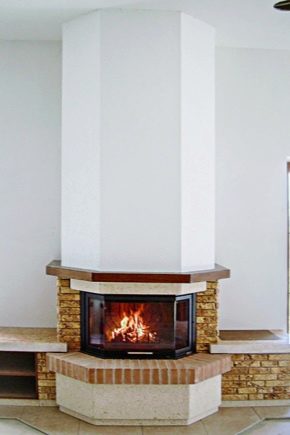
The device of modern fireplaces and stoves is reduced to the creation of a chimney and the device of a metal firebox, but in rich variations there is also a fireplace made of pure stone, almost without the use of metal. But in most cases, the final appearance is made not only by a well-sheathed fireplace, but also by a chimney. But not all materials are suitable for thermal insulation of these units.
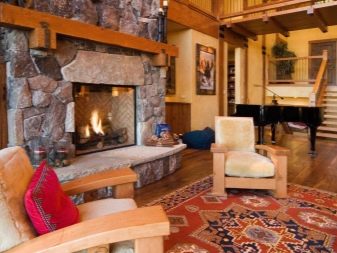

Features of the procedure
In fact, a fireplace is nothing more than an ordinary stove that played the role of a heating device with an open firebox and often a direct chimney (in remote villages). However, a straight chimney, which is not a very reliable and successful design, is widespread among the population of Russia due to its price and incompetent workers. But the days of heating from the fireplace have passed and now it is a decorative element of the house, which gives charm and elegance to the room.
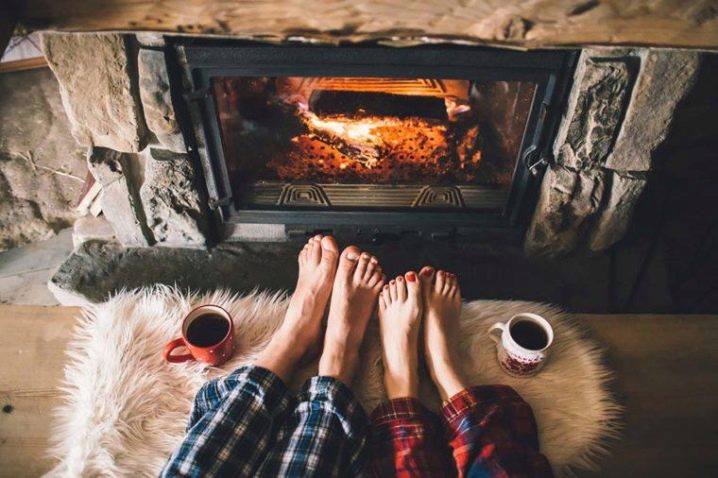
The main mechanism that generates heat is a metal structure of the "potbelly stove" type with a chimney coming out of it. Of course, only the principle of this famous stove remains in modern fireplaces, although it was known long before its appearance.
To refine such a structure, they resort to finishing it with a box made of natural stone. (or brick) or its imitation, leaving the so-called portal (burning place) and forming a high-quality chimney. You can often find a variant with tiles, which are placed on a special drywall (fire-resistant) box.

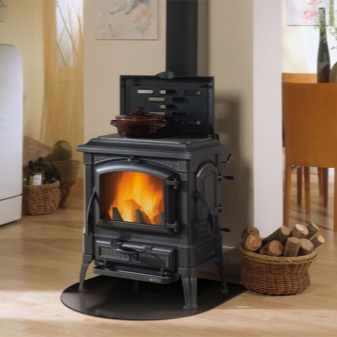
In fireplaces that run on solid fuel, the exhaust gas temperature is about 440 degrees, but the temperature of the firebox (portal) itself is noticeably lower - during operation it can reach 120 degrees.
This is a very important point, since it is necessary to select and design everything around the firebox in such a way that the drywall does not overheat (with prolonged overheating it loses its properties, collapses and deforms by melting), and the decorative finish does not deteriorate (both tiles and other finishing materials).

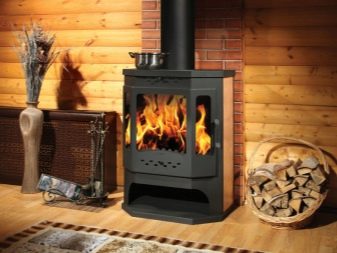
Inside the case, a special heat-insulating circuit is installed, which provides high-quality insulation from internal heat, which makes it possible to touch external parts without fear of getting burned. Warm air comes out through special holes.
The selection of fire protection elements for interior and exterior decoration serves as a real protection against fire in the room, as in the case of a chimney burnoutand the escape of sparks from the portal (which is a signal of violation of the rules of use, for example, overflow of the furnace). With high-quality work on the fire resistance of the fireplace, the finishing materials do not light up.
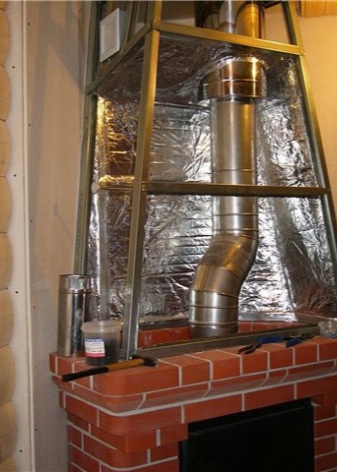
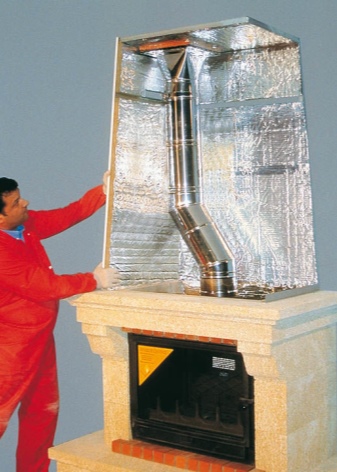
Often, fireplaces are located along the wall or in the corners of the room. In this case, the thermal insulation material must be applied to all adjoining surfaces. This is necessary to protect the house from overheating, sparks on the walls, and fire. In addition, thermal insulation will help focus the heat in the firebox, which will well increase the profitability and efficiency of the fireplace as a whole.
When laying stove and chimney pipes, panels are used that have a heat-resistant appearance.
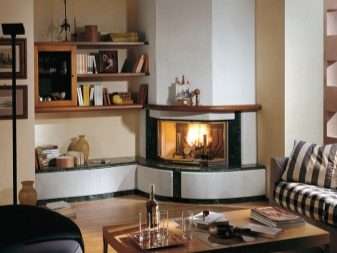
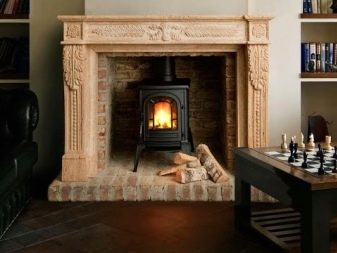
Types of finishing raw materials
When insulating fireplaces, special materials are used, mainly from stone wool slabs, such as:
- Fire batts (Rockwool), the price for 1 package (8 pcs. 1000x600x30 mm) - about 3 thousand rubles;
- PS17 (Ragos), price of 1 package (7 pcs.1200x600x30 mm) - about 2 thousand rubles;
- "TECHNO T 80" ("TechnoNICOL"), the price of 1 package (6 pieces 1200x600x50 mm) - about 3400 rubles.
The main feature of such materials is the operating temperature range, which varies from 170 to 800 degrees. Such plates are ordinary, with a fire resistance index and glued (on a special heat-resistant glue, the temperature threshold of which is 20-30% higher than this threshold at the product itself) to one of the sides reinforced with heat-resistant foil.

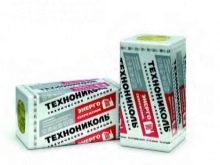
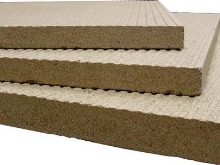
Foil further enhances the thermal insulation performance of this material by reflecting heat.
If you correctly select the finishing material, when arranging the stove, follow the advice of both the manufacturers of fireplaces and manufacturers of insulating materials, observe the usual precautions and safety during operation (do not leave a functioning fireplace unattended, do not leave flammable products and objects), then you will enjoy the fireplace heat and fire for a long time, without putting your home or yourself at risk.

Selection of thermal insulator
Numerous individual developers often overlook the fact that materials for various purposes are presented in the product line of any major manufacturer of stone wool thermal insulation.
Despite the external similarity, they have a different structure, have different characteristics from each other, are used when working with different materials: for steel and brick structures, stainless steel options.
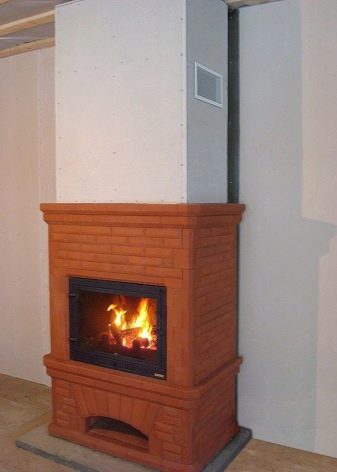
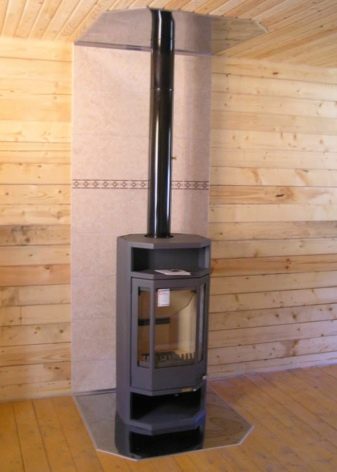
If for general construction insulation the range of operating temperatures ranges from approximately -50 to +100 degrees, then in this case, special combustion products, for example, intended for the purpose of working in a high-temperature environment (in the direct vicinity of fireplaces, stoves and other heating devices), are calculated to other loads, and the heat of the insulated plane can vary from -180 to +750 degrees. The selection of such materials must be approached most thoughtfully, otherwise ordinary insulation at high temperature indicators will become ineffective.
In addition, for these purposes, combustion products of significant density (no less than 90 kg / m3) should be used, since they insulate the surface more correctly and better at high temperatures.

There are 2 types of special high temperature thermal insulation boards:
- without foil;
- with duralumin foil, attached on one edge with a special heat-resistant glue.
The maximum permissible temperature of the edge with foil is 500 degrees, the edge with stone wool is 750 degrees.
In order not to aggravate the properties of the product, the packaging with the material must be kept indoors or under a canopy (in a horizontal position, on a dry, smooth surface), covered with polyethylene.
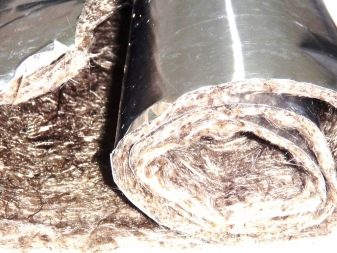
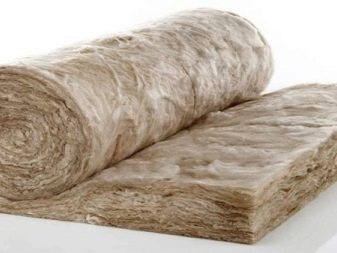
Stone wool is made from a fire-resistant material (actually from non-combustible) - rocks of the gabbro-basalt category with the addition of an insignificant amount of a binding agent in order to shape, and in high-temperature insulation it is very small (less than 2% according to the mass fraction).
Thin fibers of this heat-insulating material withstand, without melting, heat up to 1000 degrees: they are not damaged in any way, remain connected to each other, retain their strength (which also speaks of their durability), shape and will not collapse in any way without mechanical effects on the material itself.
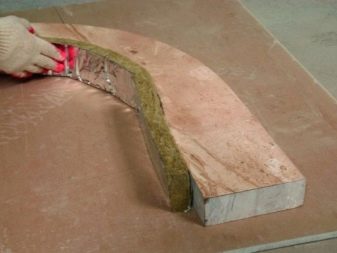

Stone wool products belong to the group of fire-resistant building materials (NG according to GOST 302W), which are used both in low-rise country houses and in multi-storey buildings. In addition, in the event of a fire, such thermal insulation for a certain time keeps the process of destruction of the supporting structures of the structure.
Since the functioning of the fireplace and its chimney is associated with the combustion process and high temperatures, their installation will require a very careful and balanced approach. There is SP 7.13130.2013 “Heating, ventilation and air conditioning. Fire safety requirements ", which clearly describes the basics of installation and arrangement of furnace chimneys, penetrations and installation of thermal insulation, based on fire safety requirements.
Disregard for these laws can lead to extremely sad consequences.
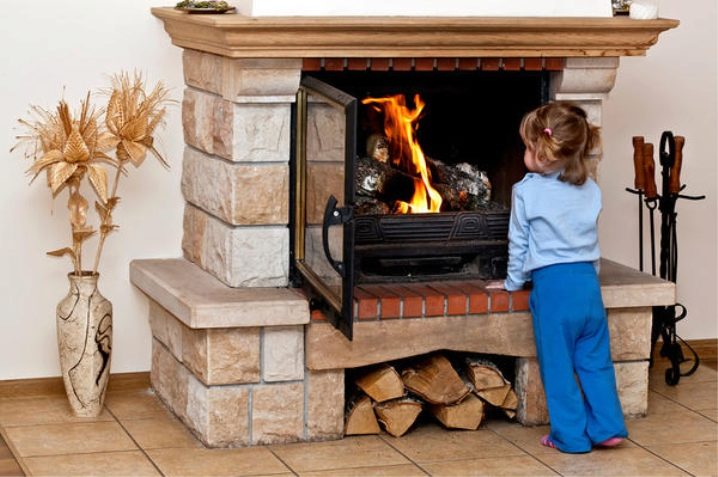
Based on practice, most of the owners of individual houses, whose sauna or house burned out, put a stove or fireplace without the help of others, where they made very gross violations, did not follow the rules for isolating the chimney from the ceiling, or did not adhere to the fire-prevention distance between the fireplace itself and the wall. , despite the fact that this parameter is indicated both in the installation instructions and in the above joint venture.
Therefore, it is recommended not only to buy high-quality thermal insulation materials, but also to hire specialists who will help to correctly and efficiently install all this. After all, even, in your opinion, a minor mistake can cost you or someone close to you life.
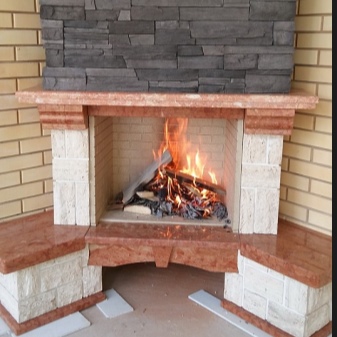

Methods
The principle of chimney insulation is roughly the same as the insulation process of the fireplace itself. It should be borne in mind that in this case there is no open flame, but the temperature is much higher. Basically, for installation, they resort to using stone wool, sewing it under a drywall box. Cotton wool is also attached to heat-resistant glue, but options with self-tapping screws are also possible - it depends on the material from which the chimney was made.
Depending on the type of chimney pipe, thermal insulation can be carried out by different types of materials: round pipes should be insulated only with rolled insulation, square or angular shapes - only with insulation plates. This is due to the requirements for fire safety.
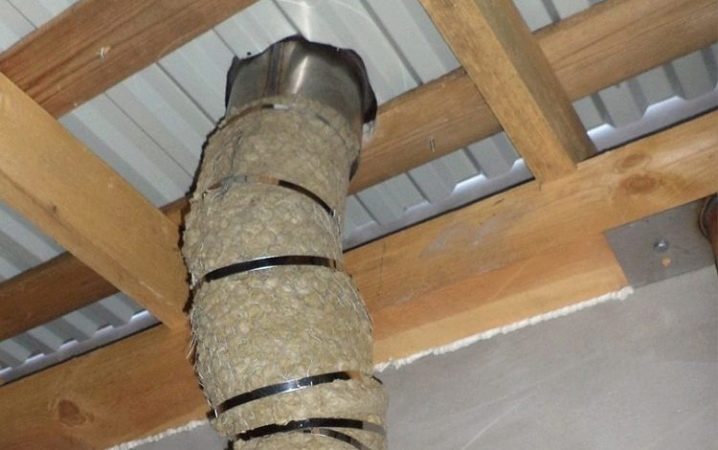
But the chimney, which extends beyond the structure (onto the roof), is insulated using a slightly different technology, generally similar, but there is a significant difference: protection from weather conditions is also required. In cases where the chimney pipe is metal, it is sheathed with rolled or lumpy cotton wool for glue and, in rare cases, with self-tapping screws. Often such pipes are hidden in one false pipe, which serves as both additional thermal protection and protection from external factors.
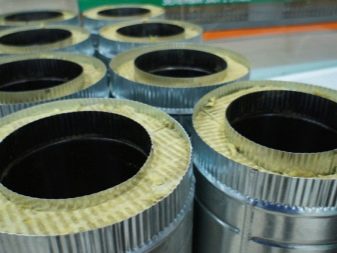
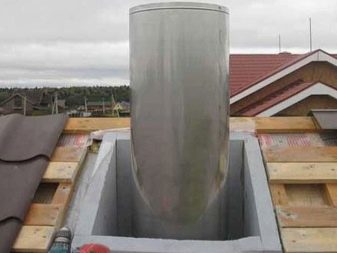
Pipes made of bricks or similar materials are insulated with heat-insulating wool in slabs, fastening it to self-tapping screws and "roses". After that, this wool is covered in several layers with special glue (street, facade), which is able to withstand high temperatures without damage. Then a special painting net and perforated corners are applied to the second leveling adhesive layer. This is done in order to strengthen the surface of the structure. After that, the surface is again covered with the same material, but with the final layer.
Thermal insulation of the passage of steel pipes through the ceiling to the outside of the walls should only be carried out in accordance with safety regulations.
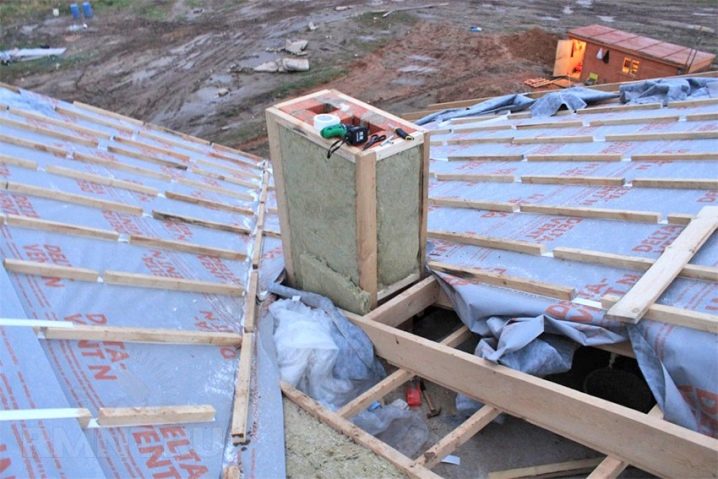
How to do it yourself?
- First, the required number of thermal insulation boards is taken, which are cut to the size of the fireplace insert.
- After that, a special heat-resistant glue (mineral, cement-based) is applied, and the application should be carried out pointwise.
- When installing foil-clad material, glue is applied to the non-foil part.
- After that, the slabs are mounted on the walls. Joints and other holes must be sealed with special heat-resistant aluminum tape, which can also be reinforced.
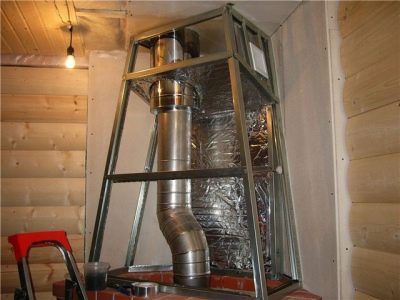
- When the main heat-insulating part of the fireplace itself is completed, the process of installing a decorative portal (firebox) begins, but it is important to remember that between this frame and the layer of thermal insulation there should be at least 4 cm, but no more than 10 cm.Then the profiles are mounted, where additional thermal insulation plates are installed in compliance with the dimensions.
It is not difficult to make thermal insulation for boiler rooms or in a bathhouse of a private house with your own hands, if you follow our recommendations.
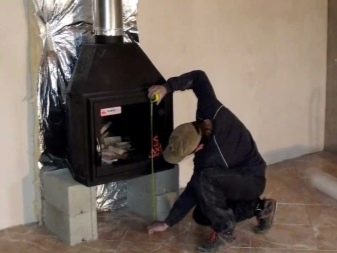
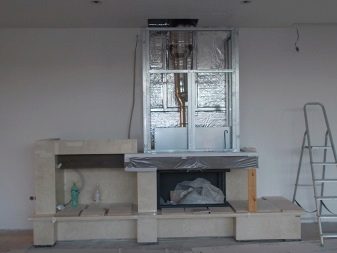
Tips from the pros
In order to increase the fire safety of the ceiling that crosses the chimney or chimney, a decompression chamber is installed, with a thermal insulation plate in a horizontal position.
It is preferable to provide 2 fan grills in the box: one - for the purpose of cooling the decompression chamber, and through the other, warm air will be transmitted through the room. Plasterboard sheets are attached to the iron guides with the help of self-tapping screws: they will be the basis for the decorative finish of the fireplace.
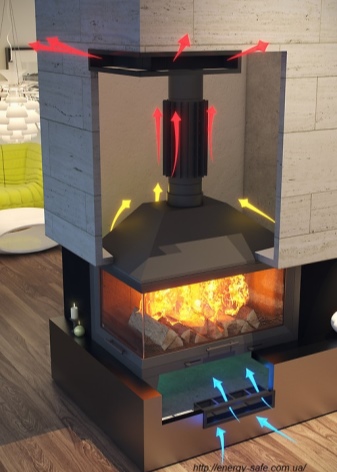
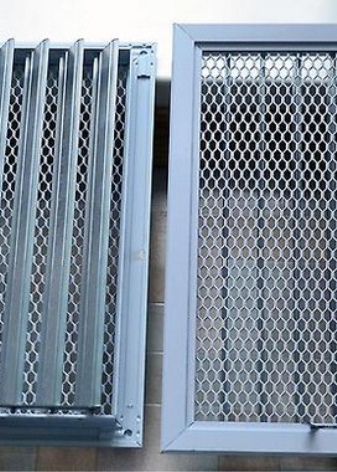
Conclusion
It is important to remember that for greater fire safety, the chimney must function properly, and the fireplace itself must be made of high quality, otherwise it will lead to smoke in the room. This is one of the basic requirements for fire safety. If you have such a problem, do not rush to sew the structure into the box: this will lead to a waste of money on expensive items.
If everything is in order with the smoke exhaust, then the thermal insulation can work quite well. The main thing in this business is a high-quality selection of materials and, which is very important, a good specialist.
You yourself can make the thermal insulation of the fireplace in your home, but this is very dangerous (in the end result) and can lead to sad consequences, therefore it is worth contacting professionals in such a matter.
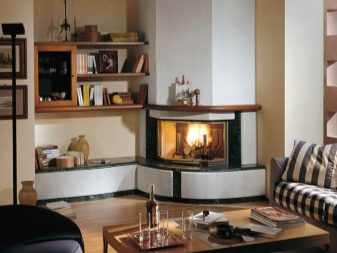

You will learn how to carry out thermal protection of the oven from the following video.













The comment was sent successfully.